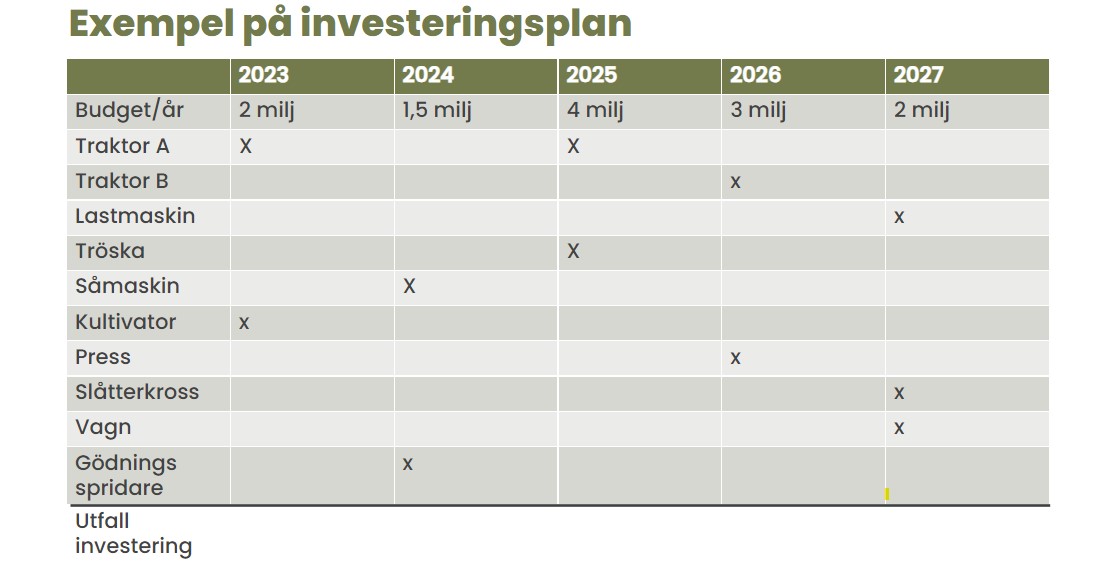
INVESTMENTPLAN
A roadmap for the farm's future!


Plan for profitability
Often, there is a crop plan for the next 3-5 years. However, to ensure this, a plan for how and when your machinery fleet will be managed and developed is also needed. Identify the upcoming challenges and opportunities that can shape your journey towards increased productivity and profit.
Market developments
Crop and input prices are increasingly volatile, sometimes high, sometimes lower. How can you best navigate these changes? By staying informed about trends and being prepared to adapt your machinery fleet, you can better manage fluctuations. Risk management and diversification by being prepared for various scenarios are becoming more crucial. A good principle is not to "put all your eggs in one basket." Will you change crop cultivation and farming methods in the coming years to address future challenges related to climate change?
Advancements in farming techniques
The climate is changing, machinery technology is advancing, and farming methods are evolving. These factors influence your choice of crops, cultivation methods, and partnerships. By being aware of these changes, you can keep your farming competitive and sustainable. Learn more about conservation agriculture here.

Future machinery investments
Your machines are the backbone of your operation. In a changing world, what will the machinery market look like in 3-5 years? Plan ahead and set cost limits for investments that strengthen long-term profitability.
Create an optimized machinery plan
To meet future needs, it's essential to have a clear investment plan for your machinery. Develop a blueprint that outlines what needs renewal, what capacity increases are required, and how you balance your financial goals with your operational needs, especially in crop cultivation. A smart machinery plan is the key to a successful future.
Gain clarity on your machinery costs:
1. Machinery budget: Define how much your machines can cost, either in total kronor or per hectare. Create budgets to safeguard your finances, forming the basis for future years' machinery investments.
2. Profitable balance: Your machinery costs should not constitute too large a portion of your revenue. Determine a percentage of income that can be allocated to machines. Improved machinery economics enhance the bottom line.
3. Future-oriented investment plan: Plan for the future with an investment plan. Which machines are prioritized? Create a realistic plan for the coming years. Having a plan provides foresight and a solid foundation for making sound investment decisions.
4. Annual review: Monitor your machinery economics annually. Identify improvement opportunities and adjust your plan to optimize your investments. With a developed investment plan, it's easy to see the consequences of changing the machinery chain due to different farming methods, increased acreage, machinery collaborations, and larger machinery investments.
5. Successful crop cultivation: Successful crop cultivation requires a well-maintained machinery fleet. Future-proof your farm by aligning future machinery investments and machinery economics with your long-term goals and strategy.